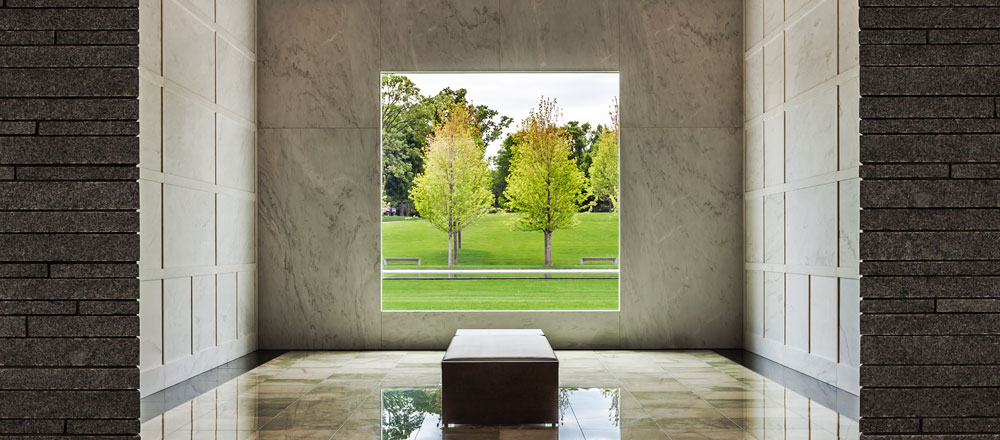Lakewood Cemetery Garden Mausoleum in Minneapolis

Addressing the intimacy of personal grieving and the shared rituals of commemoration, the design for the new Garden Mausoleum at Lakewood Cemetery revisits an ancient building type whose setting demands contextual sensitivity and attention to materiality. The mausoleum minimizes the visual impact on its historic context by nestling more than three-quarters of the building into an existing south-facing hillside.
Architect: HGA Architects and Engineers
Location: 3600 Hennepin Ave S, Minneapolis, Maine 55408, USA
Architect: HGA Architects and Engineers
Location: 3600 Hennepin Ave S, Minneapolis, Maine 55408, USA
The 24,500-square-foot building is anchored by a two-level structure housing a committal chapel and a reception space. The building then unfolds into a series of garden-level chambers for interments. The chapel and reception space are the more active, communal spaces; the garden-level chambers are quiet and contemplative. Still, with light-filled rooms connected to a landscaped garden, this project challenges the paradigm of mausoleums as dark, introverted places. Each burial chamber is different, and each frames a unique view through large windows or skylights.
In each crypt and columbarium room, daylight strengthens the relationship between the spiritual and the earth-bound while offering a serene and healing environment. The material palette –stone, bronze, wood and glass– calls upon visual and experiential senses while recalling centuries of memorial tradition.
In each crypt and columbarium room, daylight strengthens the relationship between the spiritual and the earth-bound while offering a serene and healing environment. The material palette –stone, bronze, wood and glass– calls upon visual and experiential senses while recalling centuries of memorial tradition.
With more than three quarters of the Mausoleum nestled into an existing hillside, the building blends seamlessly into its surroundings. A green roof extends the sweep of lawn over the burial chambers; a single bronze-trimmed earthen mound containing a skylight marks each chamber above the ground.
In terms of function, the project required efficient space-planning to address the problem of shrinking acreage for in-ground casket burials. With only 25 acres of undeveloped land remaining in the cemetery (out of 250), the mausoleum used a strategy of higher-density memorialization. While 7 acres are required to accommodate 10,000 in-ground casket burials, in only half an acre the mausoleum houses 4,800 niches for cremated remains and 750 full-body crypts.
In addition to preserving the cemetery’s pastoral landscape, the mausoleum had to acknowledge existing architecture, notably a 1910 chapel with neo-Byzantine mosaic interiors by New York architect Charles Lamb. The mosaics served as springboard for the marble and glass tile mosaics that signal important components of the new Mausoleum. Also granite, marble, and bronze were used to ensure longevity and enduring cultural significance.
In addition to preserving the cemetery’s pastoral landscape, the mausoleum had to acknowledge existing architecture, notably a 1910 chapel with neo-Byzantine mosaic interiors by New York architect Charles Lamb. The mosaics served as springboard for the marble and glass tile mosaics that signal important components of the new Mausoleum. Also granite, marble, and bronze were used to ensure longevity and enduring cultural significance.
The mausoleum has received the 2014 AIA Institute Honor Award in Architecture.
Jury Comments
Landscape architect / masterplan consultant: Halvorson Design Partnership
- A beautiful design project, respectful and understated, but elegant and appropriate.
- The sculpting of natural light in this project is beautiful. The materials are absolutely striking. There is not one false note to this building.
- This building is sensitive to life and death, and still community-focused.
- The contrast of the stacked stone with the curved mosaic window jamb details is spectacular.
- The natural light coming through the skylights into the perfectly crisp interiors is reminiscent of a holy place – a rare combination of contemporary and spiritual.
Landscape architect / masterplan consultant: Halvorson Design Partnership
